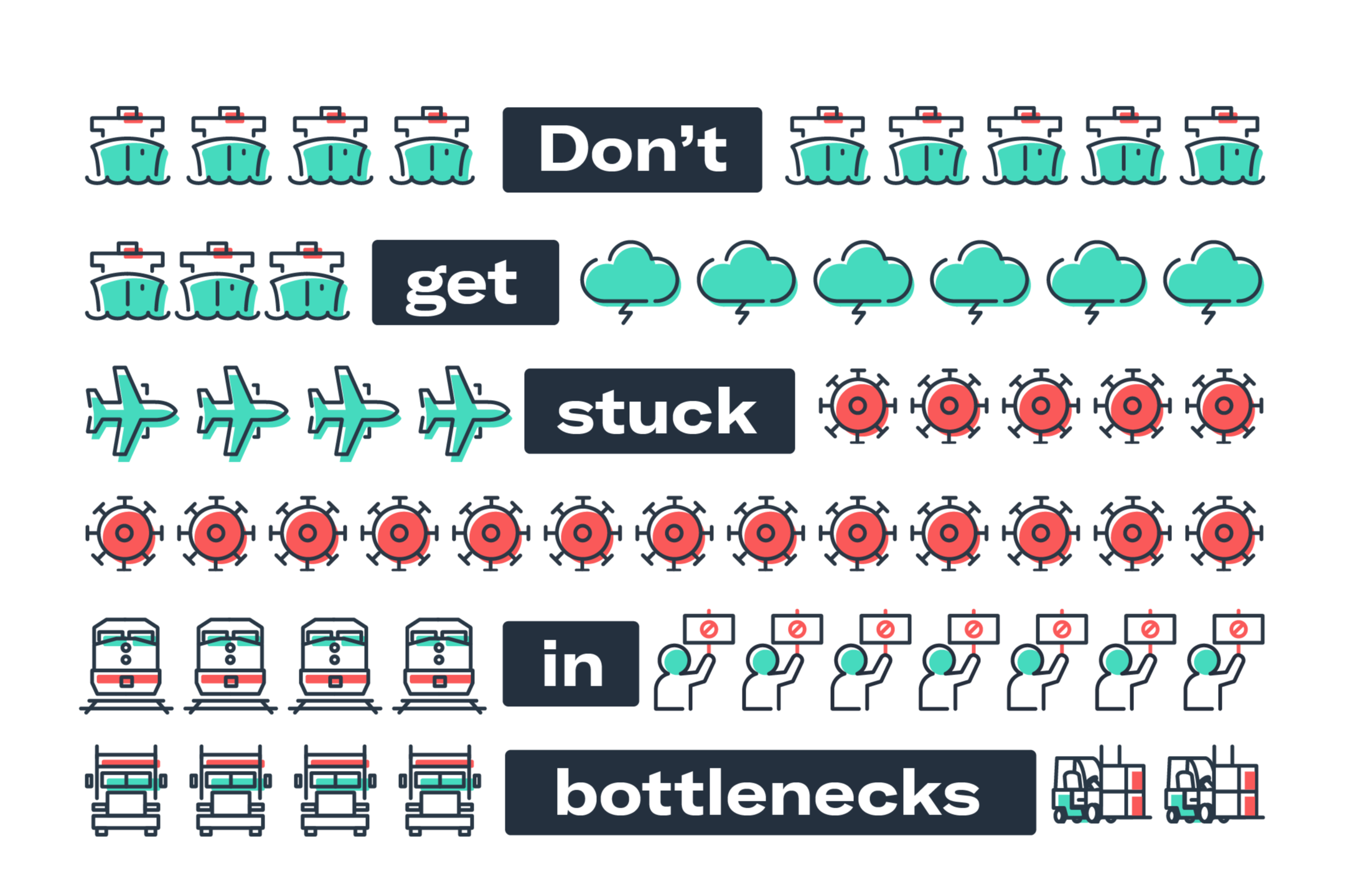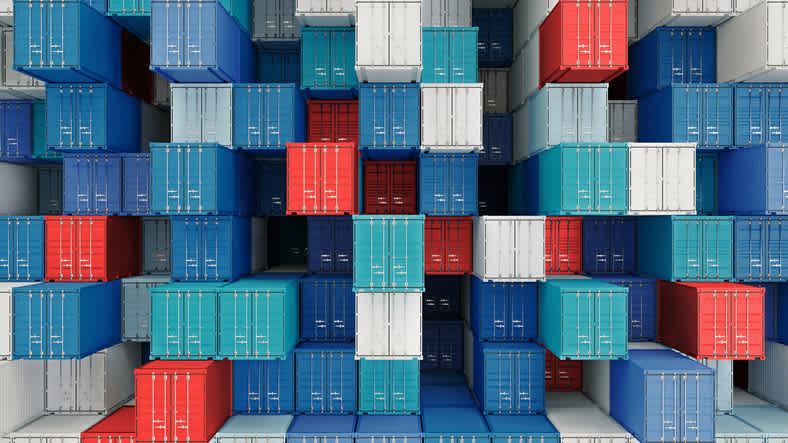
Do Any of These Logistics Scenarios Sound Familiar to You?

“Where did these D&D charges come from? My team doesn’t have the budget for this.”

“My goods are stuck in customs control, and now I face heavy contractual penalties because we couldn’t hold up on the agreed deadlines."

“I have no idea where my goods are or when they’ll arrive. Last week a container showed up without warning, and there was nobody at the warehouse to unload.”

“Communication with my suppliers is spotty at best. I leave voicemails, then wait to get a status update. Meanwhile, I’m busy putting out the fires that start because I can’t tell people what’s going on.”

“Sales, marketing, customer service, everybody comes to me for milestones, and I just don’t have them. Delivery times are so variable these days, and we’re losing customers because we can’t tell them where their goods are or when they’ll see them.”

“Paperwork is a constant headache. I work off a shared spreadsheet that doesn’t track changes, so I have no way of knowing if it’s been updated recently, who did it and where they got the info. Every week, I lose a full day to chase the paper trail.”

Each of the Above Scenarios Describes a Logistics Bottleneck.
Whenever you find yourself waiting on one piece of information, or one return phone call, in order to keep an order moving – that’s a bottleneck. Whenever you’re surprised to find a truck at your loading dock that you were expecting next week – that’s a bottleneck. When a seemingly simple situation leads to orders being delayed, shipments being unaccounted for, or needed information missing – you’re dealing with a logistics bottleneck.
Identify Bottlenecks
#1
Areas you do not expect
#2
Areas that aren’t your priority
#3
Areas where you have no visibility or insights

"Visibility was a major pain point, to the extent that our inbound shipments would sometimes just turn up at our warehouses unexpectedly. This had significant consequences across our business."
Iman Abdallah
Operations and Business Development at NA-KD
Four Root Causes of Logistics Bottlenecks
1) Lack of End-To-End Supply Chain Visibility
The data silos created by each stakeholder in a supply chain using their own spreadsheets and emails to communicate mean that there’s no way to get an overall picture of the status of an order. Suppliers might not send word of a shipment being ready until after it’s left the factory, or you may be told the vessel is set to depart today but don’t get notified that it was actually held up three days.
2) Lack of Internal Processes
Internal processes are easy when everything works as it should, but as soon as things get complex, you need to be able to make quick decisions that influence your routing and pricing decisions. Having well-documented and detailed processes helps you avoid these pitfalls and provides accountability in cases where something goes wrong.
3) Lack of Centralised Communication and Documentation
We see as many as 25%* of customer shipments impacted by late or missing paperwork. Late or incorrect submission of documents such as the Commercial Invoice or Packing List will block customs clearances and, with that, the final delivery to your or your client’s warehouse. By tracking communication and documentation from supplier to customer, you’re better positioned to work together to find ways to improve these processes.
4) Lack of Shipment Data
Underlying the above three points is a general lack of data about each link in your supply chain. Data is what powers accurate forecasts, enables real-time updates to customers, and allows for fast decision making on rerouting and mode adjustments.

Not Mitigating These Root Causes Will Cost Your Business
As with any business decision, there are costs associated with leaving the cause unaddressed. A European retailer, Blokker, was paying €600,000 a year in fines and penalties due to not being able to see where their stock and containers were.
Upstream visibility into inventory-in-motion can be a significant value driver as well. BCG research showed that a 15-30% reduction of working capital could be achieved through better visibility of end-to-end inventory in the supply chain.
More Examples of Not Mitigating Bottlenecks
Inaccurate Forecasts
Inaccurate forecasts can lead to stockouts and disappointed buyers who may leave you for a competitor.
Disorganised Internal Processes
Disorganised internal processes can lead to disordered decision making and additional delays in rerouting and price adjustments.
Missed Paperwork Deadlines
Missed paperwork deadlines due to an unseen email can lead to shipments sitting in port, idle warehouses, and cost excess.
Chaotic Arrival Times
Not knowing what is in each container, let alone when it will arrive, increases the chance of a stockout.

“Knowing what is going to arrive at our distribution centers at any given time allows us to plan and pivot as needed, as well as ensuring the right product is at the right place, at the right time, so we can fill orders. For the customer, it’s seamless.”
RoxAnne Thomas
U.S. Transportation Manager at GERBER
Addressing The Root Causes

Centralised Communication Across All Stakeholders
With a single platform housing all of your logistics communication and documentation, your warehouse staff can find out about supply delays and make proactive decisions, and your sales team can know what is and isn’t available to sell to your customers. Your suppliers will get automated push notifications to assure timely upload of documentation and you are able to track all data around delays caused by documentation issues.

Assess Internal Data Structure
Equip yourself with the right set of data that will allow you to respond fast to potential roadblocks. Inventory levels, supplier availability, sales volumes, warehouse space, all of these are important to collect so you have a complete picture of the state of your supply chain. Having this data available on a Purchase Order and SKU level will help you to make the right prioritization decisions. Rapid response will prevent a lot of hiccups from becoming real bottlenecks.

Internal Decisions
Enable your teams to make internal decisions with the most accurate real-time information on routing and pricing by having analytics in place on your complete supply chain setup. Enables you to make decisions based on data like latest rates, latest departure dates and estimated arrivals will help you make rerouting decisions if required. Giving the right people access/ permissions to the correct information at the right time keeps your internal processes running smoothly and your customers in the know.

Scenario Planning and Forecasting
With complete historical data you can make a time series analysis by adding the expected trend (projected sales volumes) and seasonal component to it. We recommend to aggregate the forecast by SKU, time and location, as this will help to reduce variation and will improve the forecast. Another solution is to forecast with a shorter time horizon and to revise it more periodically. Additionally, we recommend assessing the quality of your forecast by checking the accuracy (how close the forecast is to the actual observation) and bias (what is the persistent tendency to over or under predict).

Tying It All Together
Mitigating bottlenecks requires you to spend time, attention, and energy trying to resolve them. Timely identification and proactively addressing bottlenecks will improve your organisation's bottom line.
Find out what your supply chain can really do. Flexport can help you identify the bottlenecks you might have missed and provide the expert input you need to address the root causes.
Ready To Get Started?
Talk to a supply chain solutions expert and see the Flexport platform in action.
* Flexport Data
** https://www.supplychain247.com/article/building_a_digital_supply_chain_ready_for_the_future
*** Flexport Tech Validate Survey